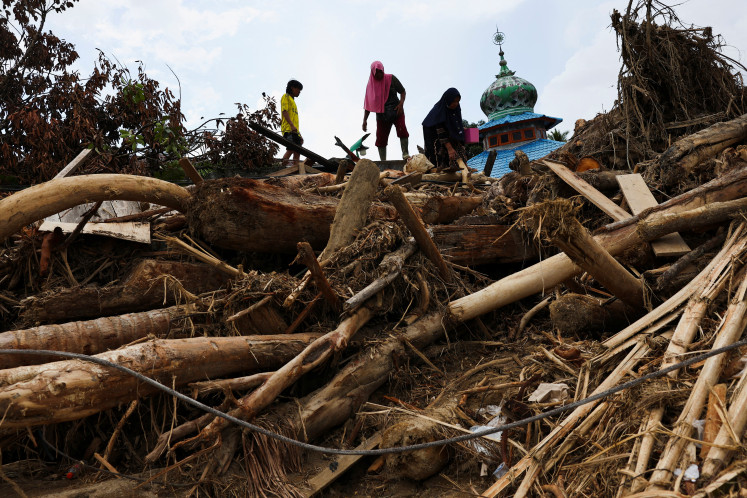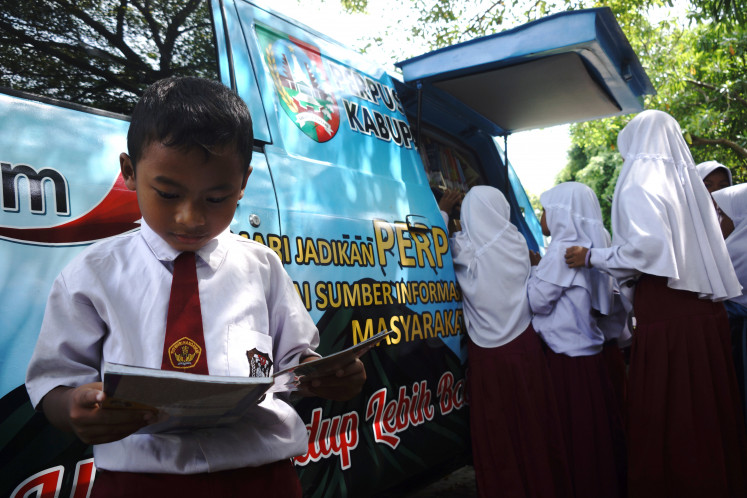Popular Reads
Top Results
Can't find what you're looking for?
View all search resultsPopular Reads
Top Results
Can't find what you're looking for?
View all search resultsBreaking the silence on violence in schools
In 2013, I conducted research at an elementary school in Yogyakarta
Change text size
Gift Premium Articles
to Anyone
I
n 2013, I conducted research at an elementary school in Yogyakarta. During an interview with a teacher, two students interrupted and said, 'There are students fighting in the backyard, please help stop them.' The teacher calmly replied, 'It's fine. They will eventually stop fighting. Just mind your business, kids.' The teacher then murmured, 'I am sick and tired of seeing students fight at this school.'
Why did nobody, not even the teacher, take student fighting seriously? What can we do to deal with violence in our schools?
A year later, Anies Baswedan, the education and culture minister, stated that education in the country was in a state of emergency. One of his parameters was the rise in the number of acts of violence in schools ' 200 cases occurred in November and December 2014 alone. The minister predicted that the figure would go up every year.
My research found that almost 75 percent of student respondents agree that violence and bullying at school contributes to their low school attendance, low self-confidence and poor well-being. They stress that feeling secure and safe at school is very important to them, and in fact, feeling safe at school highly correlates with motivation for learning and the country's quality of future human capital, including leadership capacity.
Sadly, we still keep silent and are quite unprepared to tackle this daunting phenomenon. Indeed the education minister has warned that the worse is yet to come, but still, up to today there has been no comprehensive policy or action from the government to equip teachers with the necessary skills to deal with bullying and acts of violence.
My postgraduate studies in Australia led to an opportunity to learn how schools in Australia deal with the issue.
Though violence and bullying still exists in Australia, all stakeholders, including children, parents, teachers, school staff and the community realize that the issue should be addressed seriously. In Australia, prevention of violence and bullying is infused in the national curriculum and is designed to give all stakeholders room to work together daily.
_______________________________________
Some schools choose students in grade 5 and 6 to act as 'buddies', responsible for taking care of junior students.
Gerakan Sekolah Menyenangkan (GSM), a grassroots movement that I am involved in that promotes zero tolerance to violence and bullying in schools, conducted workshops last November in Indonesia to help schools reduce violence and bullying. In the first workshop, GSM invited Australian and Indonesian teachers, parents, children, young scholars and community activists to share their ideas on how to prevent and reduce violence and bullying based on their own experiences.
A group of children shared their experiences in Australian schools and how they had been taught to act when someone bullies them.
First, they are encouraged to say, 'Stop, I don't like it.'
Second, if the bully still happens, they just go away and ignore it.
Third, if the bullying continues, they should go straight to their teacher. The teacher will invite students with problems into a prepared student well-being room and go through the issues and consequences.
Interestingly, some children who have studied in both Indonesia and Australia identified that while Australian schools develop a clear definition of violence and bullying within the Australian context, Indonesian schools fail to do the same within their own culture.
Meanwhile, for teachers, the workshop demonstrated the importance of creating a positive school culture that promoted safety and respect for others and their differences.
A teacher from an Australian public school emphasized that teachers played a strong role in ensuring students' attendance in every activity at school.
They usually lock the classroom during break time, and before and after school, because most bullying cases take place inside the classroom when teacher is absent. All children must play outside class during the break. Teachers are then rostered on 'yard-duty' to monitor children during play time. Some schools choose students in grade 5 and 6 to act as 'buddies', responsible for taking care of junior students.
Instead of merely focusing on reducing bullying, Australian schools create and promote respect in every school activity. They also engage parents and the communities by providing them a regular newsletter containing information on how to deal with assorted issues, as well as holding joint safety campaigns with schools' local communities.
School can instil and spread a culture of safety and mutual respect as a tool to break the silence.
_________________________________
The writer, a lecturer at the School of Psychology at Gadjah Mada University in Yogyakarta and a PhD student at the School of Population and Global Health at the University of Melbourne, is also on the research board for the Happy Schools Movement (GSM) campaign.










